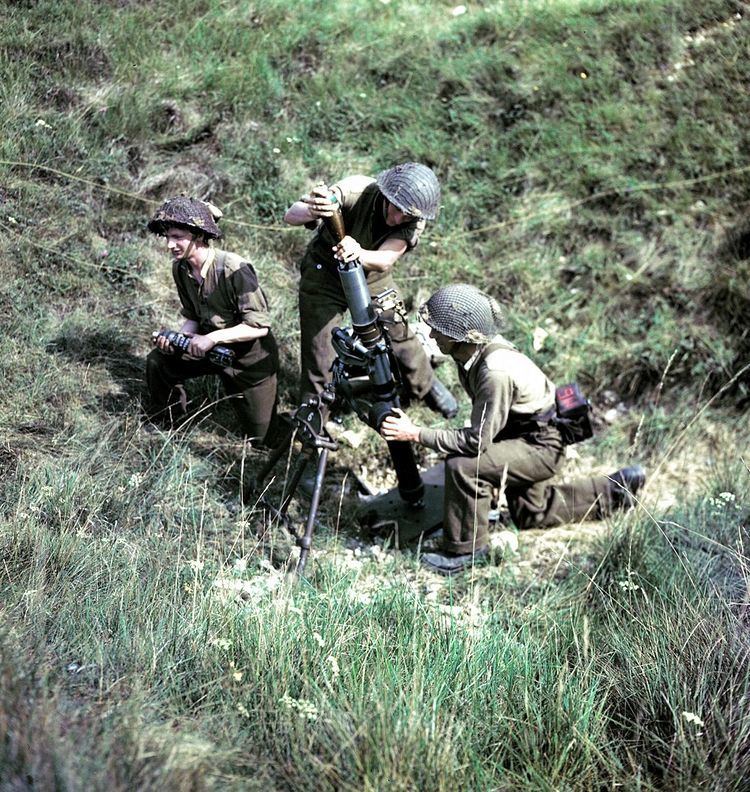Type Mortar Used by See Users | Place of origin United Kingdom Designed 1930s | |
 | ||
Wars Second World War
Korean War Weight Base plate/sight: 37 lb (17 kg)
Barrel/spares: 34 lb (15 kg)
Bipod: 44.5 lb (20.2 kg)
Total: 115.5 lb (52.4 kg) | ||
The Ordnance ML 3-inch mortar was the United Kingdom's standard mortar used by the British Army from the early 1930s to the late 1960s, superseding the Stokes mortar. Although called the '3-inch mortar' by the British Army, its calibre was actually 3.209 in (81.5 mm).
Contents
Design
The ML 3-inch mortar is a conventional Stokes-type mortar which is muzzle-loaded and drop-fired.
History
Based on their experience in World War I, the British infantry sought some sort of artillery for close support. The initial plan was for special batteries of artillery, but the cost was prohibitive and the mortar was accepted instead.
The Mark II mortar (Mark I was the Stokes) was adopted by the British Army in the early 1930s; and this was the standard British mortar when World War II broke out in September 1939. Experience in the early part of the war showed that although the Mark II was reliable and sturdy it did not have sufficient range compared to the German 81 mm s.GW.34 mortar. A series of experiments and trials using new propellants improved the range from 1600 yards to 2800 yards by about 1942; and by 1943 the barrel, baseplate and sights had also been improved.
The Mark II remained in service until replaced by the L16 81mm mortar in 1965.
